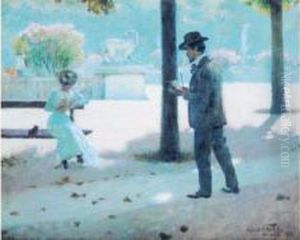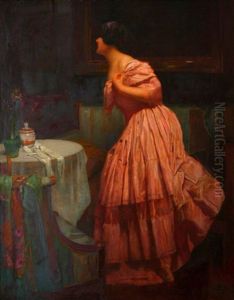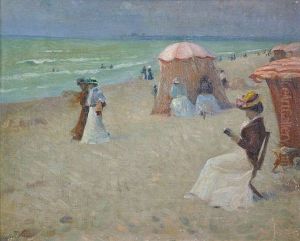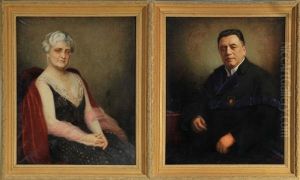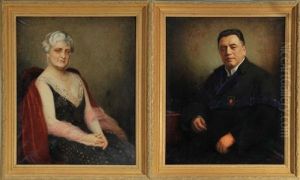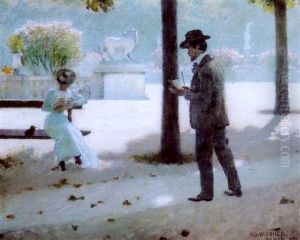Adolf Wiesner Paintings
Adolf Wiesner was a Czech artist, born in 1891 in Prague, which was then part of the Austro-Hungarian Empire. He was known for his contributions to painting and graphic art, particularly in the realm of etching and illustration. Wiesner's artistic journey began at an early age, influenced by the vibrant cultural atmosphere of Prague, a city rich in artistic and intellectual heritage. He pursued his art education at the prestigious Academy of Fine Arts in Prague, where he honed his skills and developed his unique style.
Throughout his career, Wiesner explored various themes, often focusing on landscapes, urban scenes, and the human figure. His works are characterized by a delicate intricacy and a keen eye for detail, revealing a deep sensitivity to his subjects. Wiesner was adept at capturing the mood and atmosphere of a place, whether it was the bustling streets of Prague or the tranquil beauty of the Czech countryside.
The early 20th century was a period of significant political and social upheaval, and like many of his contemporaries, Wiesner's work was influenced by the changing times. However, he largely remained apolitical in his art, focusing instead on the timeless and universal aspects of human experience and the natural world.
Wiesner's career was tragically cut short by the events of World War II. Being of Jewish descent, he was targeted by the Nazi regime. Adolf Wiesner died in 1942, a victim of the Holocaust. Despite the brevity of his life and career, Wiesner left behind a body of work that continues to be appreciated for its beauty and technical skill. His contributions to Czech art are remembered and celebrated, and his works are held in various collections both in the Czech Republic and internationally. Wiesner's legacy is a testament to the enduring power of art to capture the essence of human experience, transcending the darkest moments of history.
